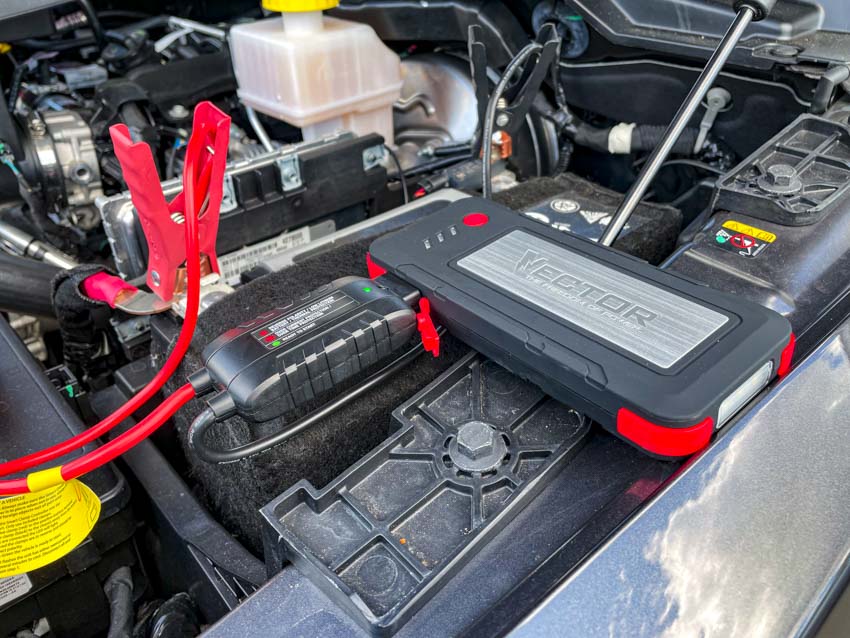Vector Lithium-Ion Jump Starter Has Your Road Trip Covered In Several Ways
Sometimes, vehicle batteries let you know when they’re starting to go. Other times, it’s right out of the blue. Either way, it’s inconvenient, but that doesn’t mean your day has to come to a screeching halt while you acquire a new power source. Vector sent us their 1200-amp lithium-ion jump starter so we can give you an idea of how to use it and what to expect.
Editor’s Note: Check out our best jump starters article to see our top picks.
Using the Vector Lithium-Ion Jump Starter
Why Lithium-Ion?
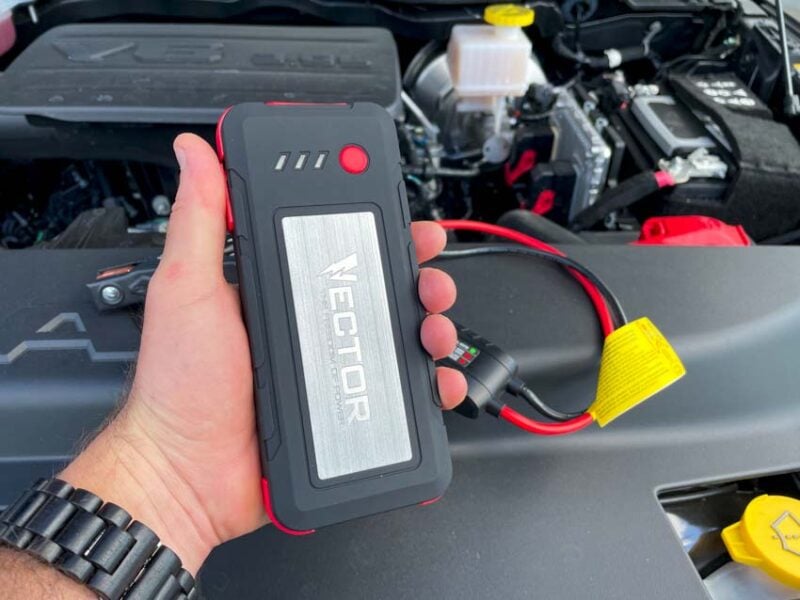
There are plenty of types of portable jump starters on the market and you may already be familiar with ones that use lead-acid batteries. They work well, but lithium-ion models are much smaller, lighter, and hold a charge longer.
Vector’s power bank is just 7 x 3 inches and weighs 14 ounces. You have to account for your alligator clamps and charging cord, of course, but it takes up far less space in your vehicle. We recommend keeping everything in the box that the unit comes in (after fully charging it). At 10 3/4 x 6 x 2 1/2 inches, there’s space for the box under a seat in nearly every vehicle and you’ll have everything you need when you need it.
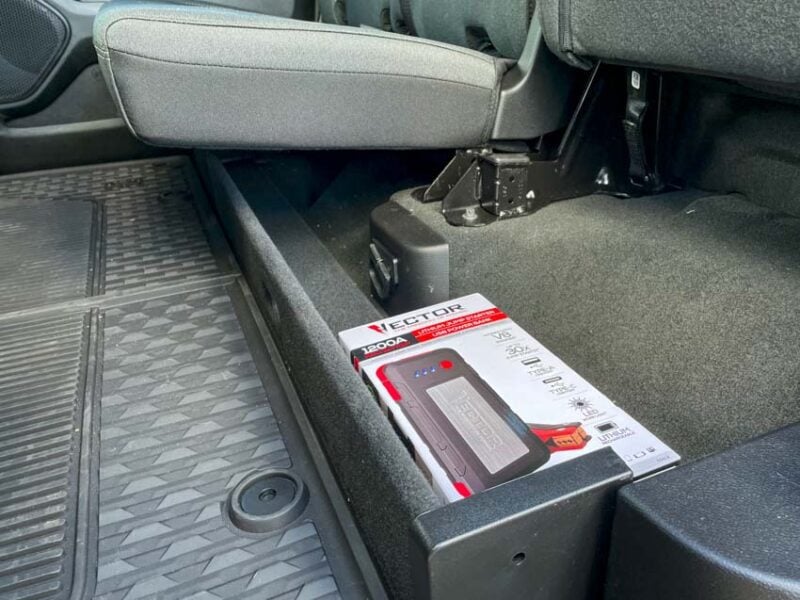
Jump Starting
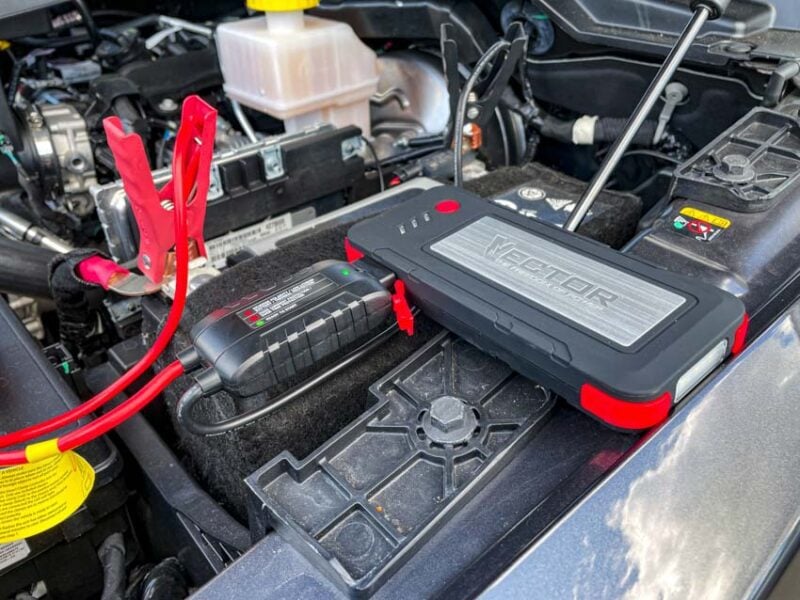
If your vehicle has a 12V ignition system, chances are this jump starter can help you out, even if you have a V8.
When you need a jump, the setup is super simple. Open up the red cover labeled “Engine Start”, plug the clamps in (they only fit in one way), connect the red to the positive battery terminal, connect the black to the negative battery terminal (or engine block), look for a green LED light to confirm a good connection, and start your engine. There’s no need to wait for several minutes or involve a second vehicle.
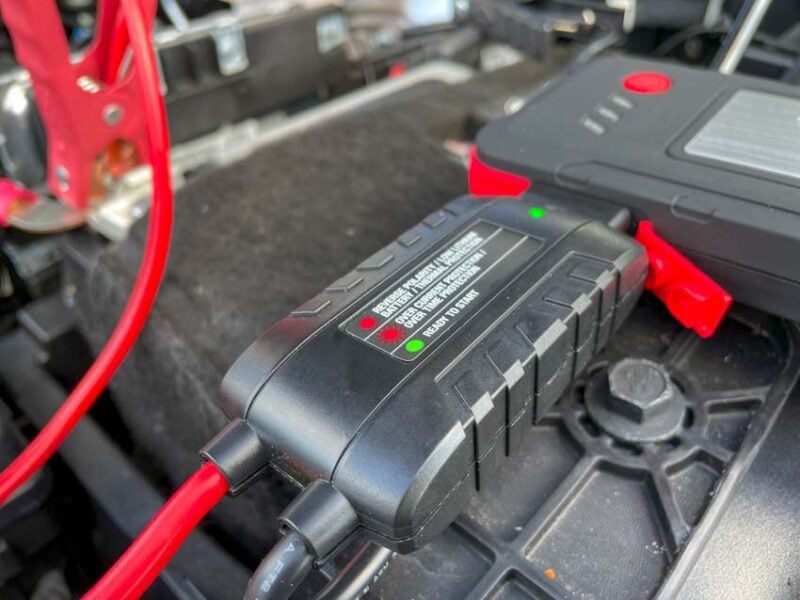
Note that a red light indicates the clamps are not connected correctly, the power bank needs to charge, or the unit needs to cool down.
Warning: Do not try to jump-start a vehicle with the power bank plugged in and charging.
When you’re done, disconnect the negative first and then the positive. Be sure to recharge the unit when you get to your destination, and every 3 to 6 months when you’re not actively using it. While the unit can support up to 30 jump starts on a charge, it’s better to be safe than sorry.
Bonus Features
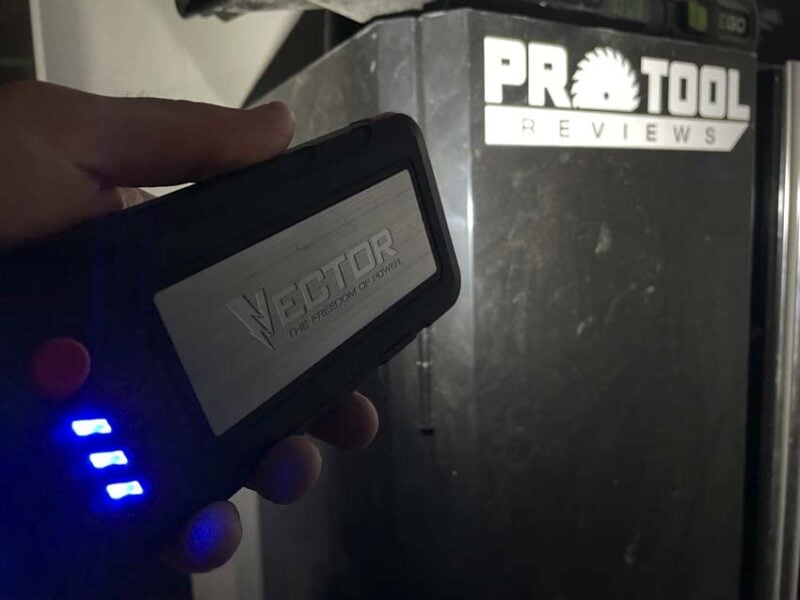
Vector added a handful of features to make this more than just a jump starter. On one end, there’s an LED light and on the other, you have a USB-A and a USB-C port. Both USB ports are fast-charging 3.1-amp designs.
To use these functions, you need to press the red power button on top of the power bank. The first press activates the USB ports. The second press turns on the LED light (the USB ports are still active). A third press turns everything off again.
You also have multiple charging options. You can use the USB-A to USB-A cable, connect it to the 120V AC adapter, or connect it with the 12V vehicle adapter.
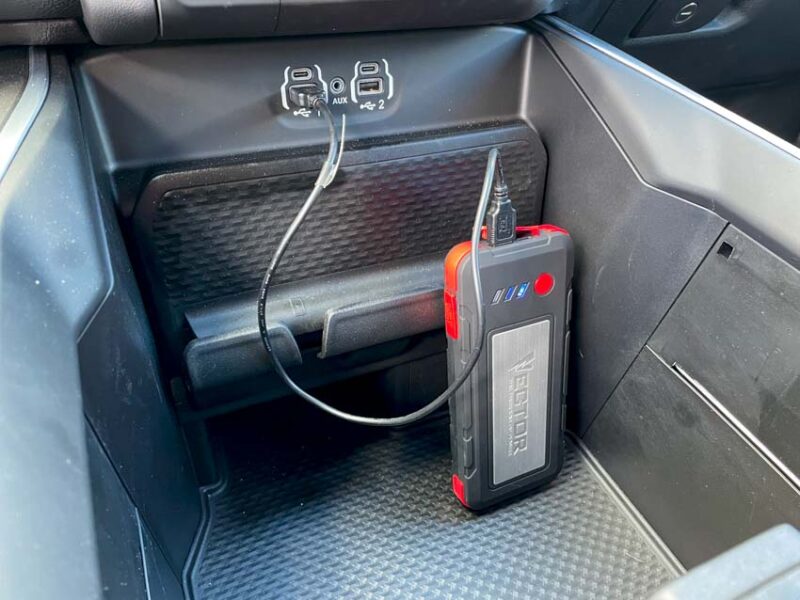
Vector Lithium-Ion Jump Starter Price
We found the Vector SS6LV at the Home Depot, both online and in our local store. It runs $106, includes everything you need to charge and jump-start, and has a 1-year warranty.
The Bottom Line
What we like most about the Vector lithium-ion jump starter is how much more compact it is compared to other portable options along with lithium’s lower discharge rate. Its ability to jump-start engines up to V8s, charge devices, and offer some light makes it a more versatile part of your vehicle’s tool kit. For around $106, it’s a handy addition ahead of your next road trip.
Vector Lithium-Ion Jump Starter Specifications
- Model: Vector SS6LV
- Battery Chemistry: Lithium polymer
- Voltage: 11.1 volts
- Capacity: 37.185Wh
- Boost Current: 335A (1 second), 250A (2 seconds)
- Operating Range: – 20° to 40° C (-4° to 104° F)

